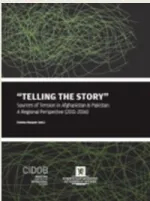“TELLING THE STORY”. Sources of Tension in Afghanistan & Pakistan: A Regional Perspective (2011-2016)

I t is with pleasure and interest that we observe the publication of the results of this long-standing research project by CIDOB on the sources of tension in Afghanistan and Pakistan. Both are countries of high priority for Norwegian foreign policy and the focus of the broad international effort to contribute to peace and stability in Afghanistan. Both countries remain of significant interest, even as we observe that the results of the combined international efforts have been decidedly mixed. We took the decision to finance this research project in part because we found its proposed regional perspective to be of particular interest. In our view, a regional approach was likely a requirement for stabilization and peacemaking in the region. In this regard, we thought that research coming out of a Spanish think tank with which we had not collaborated with in the past and that made a point of working with analysts primarily from the region itself, would form a useful complement to the research coming out from research centers and think tanks in Norway and the English-speaking world. Today, this assumption appears vindicated. CIDOB and its collaborators in the project have brought out a series of high-quality research papers comprising analysis and policy recommendations that go beyond the security scope prevalent in much research. The result is a highly interesting time series analysis of the evolving interests of the regional powers that enhances the understanding of the complexities of issues at play in Afghanistan and Pakistan. Norway is pleased to have been in a position to provide financial support to this project. We have appreciated the process of collaboration with Dr. Emma Hooper and the other talented researchers involved at, and with, CIDOB; and we commend their efforts to further our collective understanding of issues that are no less relevant today than when the research project was conceived.